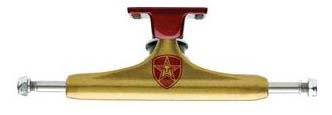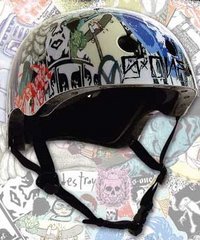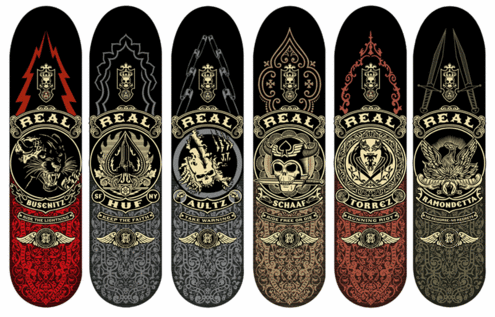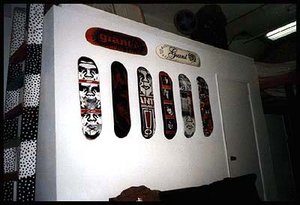Skateboarding (Redirected from Skateboard)
From The Giant: The Definitive Obey Giant Site
Throughout the years, Shepard has designed many skateboards. Being a skater himself, he has always had a connection the activity. Shepard started skating in 1984 when professional skateboarders were really popular and has said he really looked up to them, not just for their skating abilities, but for their culture and music alike. Skateboarding is what introduced him to punk rock, which, in turn, is what sparked Shepard's thinking on a more political level.
In 1987, Shepard was riding a board with a Natas graphic on it. It was on this board that he first learned to boardslide rails; because of this, the board really stuck with him, and in 2004 Shepard did a reinterpretation of this graphic.
Now that Shepard has made a name for himself in the art world and now designs board graphics of his own, he feels as though his involvement in skateboarding has come full-circle. In 2005, Shepard worked with Plan B to design a board and print of each of their team members.
From Supply and Demand, pg. 31:
Skateboarding culture was a huge influence on my work, especially in the way stickers are such an important decorative element of the culture, and eventually skaters started embracing my work into their culture. Skateboard videos were a major medium for promotion, so I decided I would sponsor a team and lure people in under the guise of a skateboard video, but it was really embedded with conceptual propaganda.
Images from Supply and Demand:
Shepard Fairey Plan B skateboards:
Other Shepard Fairey skateboards:
The Real skateboard set by Shepard Fairey:
An old picture of several Shepard Fairey skateboards.
No Shepard Fairey-designed skateboard would be complete without the Obey Destructo trucks:

|
And don't forget your artist collaboration helmet, featuring Shepard Fairey, Jeremy Fish, and Lori D.

|
© Copyright |
|---|
| This page contains an image or images of drawings, paintings, photographs, prints, or other two-dimensional works of art, for which the copyright is presumably owned by either the artist who produced the image, the person who commissioned the work, or the heirs thereof. It is believed that the use of low-resolution images of works of art for critical commentary on the work in question, the artistic genre or technique of the work of art, or the school to which the artist belongs on the English-language website thegiant.org, hosted on servers in the United States, qualifies as fair use under United States copyright law. |





























